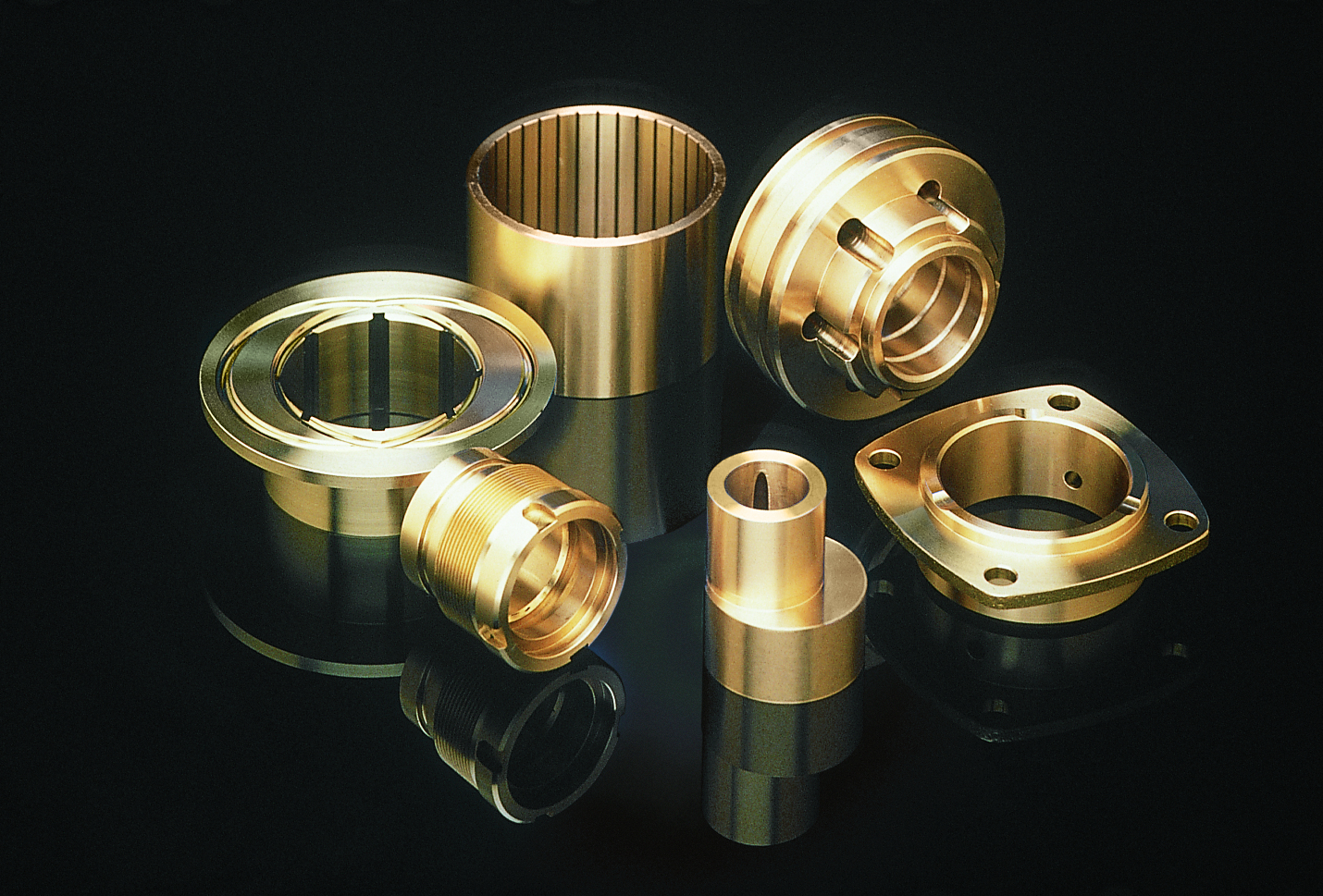
Copper-lead-tin alloys
Copper-lead-zinc alloys increase machinability and corrosion resistance. These alloys can contain 2 to 11 % tin and 1 to 23 % lead.
Copper-tin-lead casting alloys without added zinc are also called cast-tin-lead bronzes. Materials from this group, which can contain 1.5 to 10.0 % zinc as an alloy component in addition to tin and lead, are also known as gunmetal. Copper-tin-lead casting alloys usually have a small addition of nickel.
Copper-lead-tin casting alloys contain up to 26 % lead, which is almost insoluble in the solid state and is present in the structure in the form of finely distributed particles. The contents of lead in the copper-lead-tin casting alloys (cast-tin-lead bronzes) are usually much higher than those of tin. Due to its low melting point, lead is able to fill any casting porosities that may arise – caused by the volume deficit that occurs during solidification. This increases the pressure tightness of the castings. Strength and elongation decrease slightly with lead additions above 1.5%. The solidification processes are practically not influenced by the lead content and take place in the presence of liquid lead as in binary copper-tin alloys. Accordingly, the tin addition suppresses the miscibility gap present in the copper-lead system, and the common casting alloys all lie outside the range of the miscibility gap.
Lead content in castings contributes not only to improving machinability, but also to increasing corrosion resistance, especially against sulphuric acids. In addition, lead additives improve the emergency running properties of sliding materials.
Are you looking for a different content?